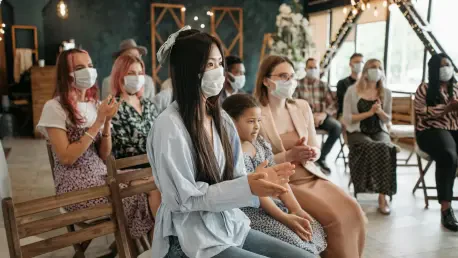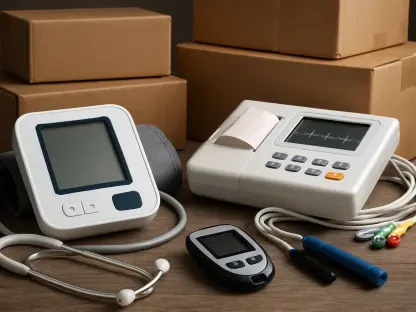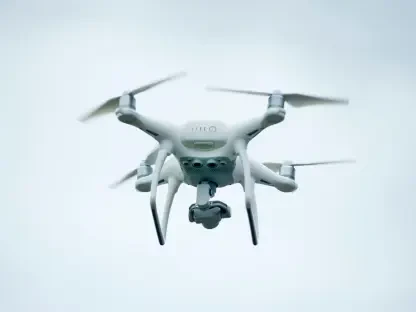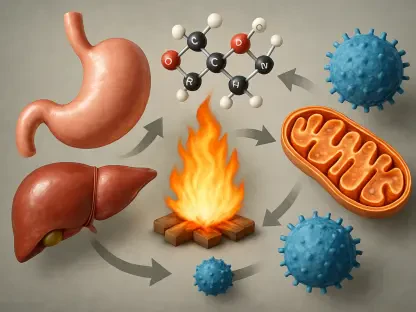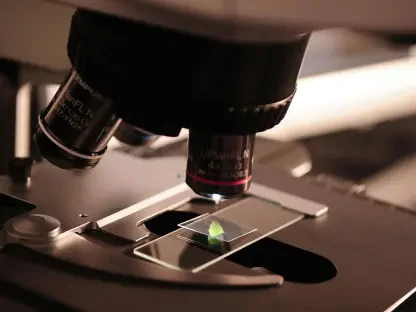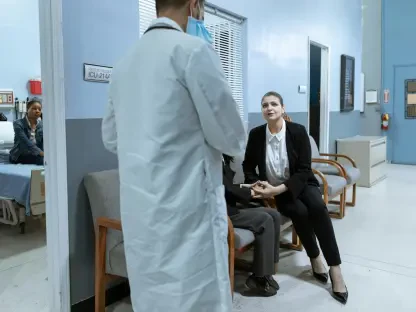In recent years, the field of public health has increasingly looked beyond traditional methods to engage with communities and convey complex messages. Art has emerged as a powerful tool that not only communicates health information effectively but also inspires behavioral changes. This intersection of art and public health is gaining momentum, with creative media being employed to bridge gaps in understanding and foster a deeper connection with audiences. By transforming abstract health concepts into relatable stories and visuals, art has the potential to reshape public health campaigns in innovative and impactful ways.
Harnessing Emotional Connection and Engagement
Art’s Ability to Forge Emotional Bonds
Art possesses an extraordinary ability to evoke emotions and create connections that transcend conventional communication barriers, especially in public health campaigns. By engaging individuals on an emotional level, art humanizes health messages, making them more relatable and impactful. Murals, films, music, and other interactive media have the power to reflect the stories of diverse communities, promoting identification and active participation. The emotional resonance of creative expression reduces stigma around health topics, encouraging open dialogue and understanding among audiences.
Through effective storytelling and artistic expression, public health initiatives can break down complex medical information into more accessible narratives. These narratives tap into the emotions and experiences of individuals, fostering empathy and creating a sense of connection with the health messages being conveyed. By prioritizing emotional engagement, art can make public health campaigns more memorable and encourage positive behavioral changes, ultimately leading to healthier communities.
The Interactive Nature of Art in Public Health
Unlike traditional health communication methods, which often rely on technical language and statistical data, art embraces creativity and interactivity, allowing it to reach wider, more diverse audiences. Artistic projects can be tailored to local cultures, ensuring that the messages resonate with the intended community. By using a variety of media, from murals and installations to digital platforms, art transcends literacy levels, making health information more accessible to everyone.
The interactive nature of art not only engages individuals but also fosters a sense of ownership and involvement in their health journeys. By encouraging community participation in the creation and implementation of artistic projects, public health initiatives gain trust and support from local populations. This community-centric approach ensures that health messages are rooted in the realities and experiences of the people they aim to serve, resulting in more effective and sustainable outcomes.
Storytelling as a Catalyst for Change
Transforming Statistics Into Narratives
Storytelling serves as a powerful catalyst for change in public health by transforming abstract statistics into compelling narratives that resonate with individuals on a personal level. Through creative media, public health topics become relatable and understandable, fostering empathy and engagement. Documentaries like “Unnatural Causes: Is Inequality Making Us Sick?” and films such as “Philadelphia” illustrate this concept, highlighting the importance of narrative in conveying complex health issues.
By humanizing public health topics, storytelling bridges the gap between information and understanding. It offers diverse perspectives and experiences, allowing individuals to see themselves reflected in the stories. This relatability opens avenues for dialogue and encourages empathy, ultimately prompting individuals to take action and advocate for change within their communities. As a result, storytelling not only raises awareness but also drives the adoption of healthier behaviors.
Amplifying Voices Through Personal Stories
The success of storytelling in public health lies in its ability to amplify the voices of individuals and communities affected by health issues, making their stories an integral part of the dialogue. Projects like “This Is My Brave,” which share personal stories related to mental health, contribute to a more compassionate and informed public. By showcasing diverse narratives, these initiatives challenge stereotypes and reduce stigma, paving the way for more open discussions about sensitive health topics.
When individuals share their experiences through art and storytelling, it creates a powerful sense of connection and solidarity among audiences. This approach encourages empathy and fosters a supportive environment where individuals feel understood and validated. As a result, public health campaigns that prioritize personal stories are more likely to be embraced and supported by the communities they seek to engage, leading to sustained impact and change.
Community-Centric Approach to Public Health
Building Trust and Participation Through Art
One defining aspect of using art in public health is its capacity to center community experiences and actively involve individuals in the process of change. Art projects that focus on community engagement foster trust and participation, making it easier to promote healthy behaviors and lifestyle changes. By collaborating with local artists and community members, public health campaigns can create initiatives that resonate with the cultural nuances and values of the target audience.
Community engagement through art enhances the legitimacy and effectiveness of health messages. When communities are actively involved in the creative process, they become co-creators of the solutions to their health challenges. This participatory approach not only builds trust but also empowers individuals to take ownership of their health journeys. The collective effort of artists, health officials, and community members creates a collaborative environment where innovative solutions can thrive.
Encouraging Active Involvement and Dialogue
Art’s community-centric approach extends beyond creating visual representation. It encourages active involvement and dialogue, making health campaigns more inclusive and representative of diverse perspectives. By incorporating feedback from community members, public health initiatives become more relevant and effective, addressing the unique needs and challenges faced by different populations.
Engaging community members in dialogue ensures that health messages are culturally sensitive and adaptable to local contexts. This adaptability is essential in addressing the complexities of public health issues, allowing campaigns to resonate with diverse audiences. Additionally, the sense of involvement generated through art empowers individuals to advocate for health improvements and policy changes within their communities. The collaborative nature of art and its ability to foster dialogue positions it as a powerful tool for driving public health change.
Bridging Art and Official Messaging
Art’s Role in Enhancing Message Accessibility
A significant trend in using art to promote public health is its ability to bridge the gap between official messaging and real-world impact. Traditional health communications can be perceived as distant, daunting, or even inaccessible due to their technical nature. However, art provides a unique opportunity to translate these messages into more approachable and digestible formats. By weaving creativity into public health narratives, art ensures that messages reach a broader audience and are understood in meaningful ways.
Art’s adaptability is instrumental in tailoring messages to fit the cultural and social intricacies of various communities. This tailored approach not only enhances the resonance of health campaigns but also ensures that messages are not lost in translation. Through visual storytelling, music, film, and performance, art offers dynamic platforms for conveying health concepts, resulting in better engagement and retention of information. This transformation from static messages into vibrant, attention-grabbing narratives underscores art’s indispensable role in enhancing message accessibility.
Facilitating Powerful Community Dialogues
Art’s potential to evoke emotions and facilitate conversations extends far beyond just raising awareness. It can cultivate powerful community dialogues that inspire actions and collaborations. Creative media can break down barriers and create safe spaces for individuals to discuss sensitive health topics openly. This open dialogue paves the way for collective understanding and encourages collaborative efforts to address public health challenges.
When art catalyzes dialogue, it invites diverse perspectives and ideas, sparking meaningful conversations around public health issues. These dialogues often lead to the identification of creative solutions and strategies, strengthening community resilience and capacity to tackle health challenges. By facilitating discourse, art fosters an environment where individuals feel empowered to contribute their insights and experiences. This inclusivity and collaborative spirit are key factors in driving lasting change within communities.
Future Directions and Considerations
Integrating Art into Health Strategies
Looking ahead, the integration of art into public health strategies holds immense promise for achieving significant and lasting improvements. This creative approach necessitates building interdisciplinary collaborations involving artists, health professionals, policymakers, and community leaders. By fostering partnerships, public health initiatives can leverage diverse expertise and perspectives to design interventions that resonate with audiences and address systemic health challenges.
To maximize art’s impact on public health, it is essential to ensure sustainability and cultural relevance. This involves carefully tailoring initiatives to meet the unique needs of each community, considering factors such as cultural norms, resources, and existing health infrastructure. By embracing adaptive strategies, public health campaigns can remain responsive to changing dynamics, ensuring their continued effectiveness and relevance over time.
Evaluating Impact and Encouraging Innovation
While art’s potential to influence public health is promising, evaluating its impact and encouraging innovation remain crucial components of this approach. Rigorous evaluation methods can help identify the effectiveness of art-based interventions and determine best practices for implementation. By measuring outcomes and gathering feedback from communities, public health practitioners can continuously refine their strategies to enhance impact and reach.
Innovation in art and public health should be encouraged through research and support for creative projects. Fostering an environment where artists and scientists collaborate enables the exploration of new ideas and technologies that can further advance public health goals. This dynamic interplay between creativity and scientific inquiry can drive novel solutions and inspire continued progress in addressing complex health challenges.
The Evolution of Public Health Advocacy
In recent years, public health has been exploring beyond conventional methods to better engage communities and disseminate complex health messages. Art has emerged as a potent tool in this endeavor, proving effective in not only communicating important health information but also inspiring meaningful behavioral changes. This synergy between art and public health is gaining traction, with creative mediums being utilized to bridge the gaps in understanding complex health issues and develop a deeper, more meaningful connection with diverse audiences. By converting abstract health concepts into relatable stories and compelling visuals, art possesses the capacity to transform public health campaigns, making them more innovative and impactful. This novel approach can effectively resonate with individuals, fostering a greater understanding and awareness among communities. As this trend continues to evolve, it highlights the potential to revolutionize the way public health messages are crafted and delivered, ensuring they are more engaging and accessible to all.
